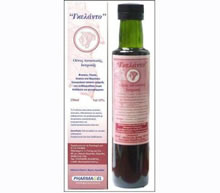
Λεξικό .. High Molecular Weight Allergens (H.M.W.A.)
High Molecular Weight Allergens (H.M.W.A.)
Virtually any plant, animal or bacterium may produce allergens which when inhaled can induce allergic rhinitis or asthmatic symptoms. There are generally globular proteins or protein-containing antigens. Examples of allergens include mammals (laboratory workers, veterinarians), insects (Silkworm workers, beekeepers, etc.), arachnids (grain mites), (rustacea, crab or lobster workers), molluscs (oyster workers), bacteria (enzymes in detergents), and various plant parts including cocoa beans, tobacco leaf, grain dust, psylium pharmaceutical and hospital workers exposed to bulk laxatives), etc. Occupational asthma (OA) may account for 25% or more of de novo adult asthma. The nomenclature has now better defined categories of OA caused by sensitizing agents and irritants, the latter best typified by the reactive airways dysfunction syndrome. Selecting the most appropriate diagnostic testing and management is driven by assessing whether a sensitizer is involved, and if so, identifying whether the sensitizing agent is a high-molecular-weight agent such as a protein or a low-molecular-weight reactive chemical such as an isocyanate.
References
Dykewicz MS. Occupational asthma: current concepts in pathogenesis, diagnosis, and management. J Allergy Clin Immunol. 2009 Mar;123(3):519-28; quiz 529-30.
Γκέλης Ν.Δ. - Λεξικό Αλλεργίας - Εκδόσεις ΒΕΛΛΕΡOΦΟΝΤΗΣ - Κόρινθος 2013
Gelis Ν.D. - Dictionary of Allergies - VELLEROFONTIS Publications - Corinth 2013




